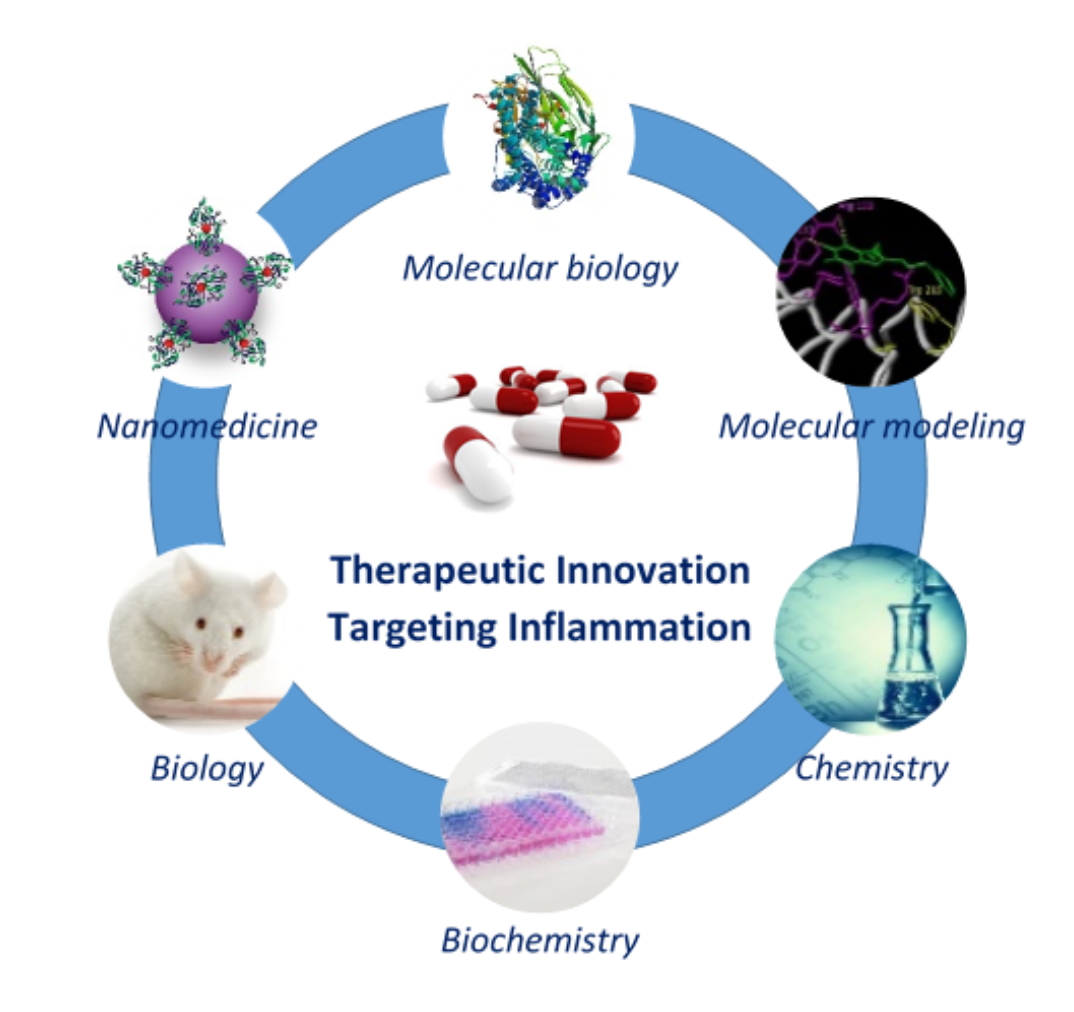Therapeutic innovation targeting inflammation
Teams of the fourth work package focus on (i) the nanoparticle-assisted drug delivery, (ii) the development of new drug candidates and (iii) the identification of new diagnostic/prognostic biomarkers in order to develop new therapeutic strategies targeting inflammatory bowel diseases, irritable bowel syndrome and liver ischemia/reperfusion injury. From target identification to in vivo pharmacological evaluation, we carry out these projects combining computational chemistry, vectorization, bioanalysis, chemical synthesis and biobanking.The topics associated to nanoparticles have evoluted and works involving nanomedicine are actually developed within a biotech company. |
|
Research topicsWe develop drug-like inhibitors with proved anti-inflammatory profiles against two protein targets: (i) the NOD-1 receptor of bacterial molecules (ie. peptidoglycan) and involved in liver I/R injuries (topic 1) and (ii) the ATP-gated channel P2X7 receptor (topic 2). Parallely, we aim at designing and evaluating pharmacological tools for studying the immunomodulatory function of the S. haematobium P28GST parasitic enzym in Crohn disease (topic 3). The usual patient management approach of symptom-centered diagnosis in chronic IMIDs is limited by its focus on a few late or even end-stage disease manifestations and by its disregard for underlying pathogenic mechanisms. There is a huge need to develop new diagnosis and prognosis biomarkers in these diseases, which will result in improvements in the precision of diagnosis both of the disease itself and of its complications, as well as in a greater understanding of the complex pathogenic mechanisms responsible for the clinical manifestations of disease. These analyses should also lead to improvements in the design of appropriately stratified clinical trials for determining the effects of treatment. We focus mainly onto alcoholic hepatitis (topic 4), IBD-induced intestinal fibrosis (topic 5) and skin/lung fibrosis in systemic sclerosis (topic 6). |
